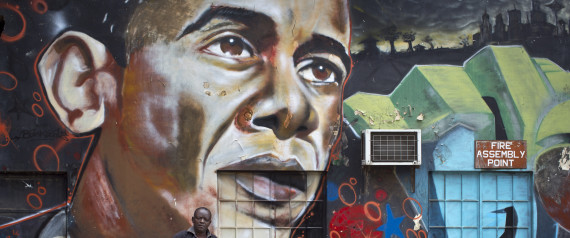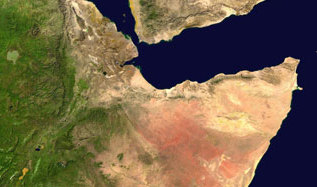PBS: Escaping Eritrea … [Read More...] about ካብ ውሽጢ ቤት ማእሰርታት ኤርትራ
What President Obama Didn’t Say to the People of Africa
Stephen Peel, Founder SMP Policy Innovation Limited, 08/04/2015, The Huffington Post
With much fanfare, President Obama addressed the African Union last week in Addis Ababa. His speech highlighted that with Africa’s population forecast to “double to some two billion people” there is an urgent need for the continent to “generate millions more jobs than it’s doing right now.” The importance of this comment cannot be overstated. Sub-Saharan Africa’s population is projected to increase from approximately 900 million currently to about 2 billion by 2050, according to UN estimates. Such growth rates are some of the highest the world has ever seen, and yet are occurring in some of its poorest and most undeveloped areas. Thirty-three of the world’s least developed countries are in sub-Saharan Africa. Seventy percent of its population lives on less than $2 per day and around 48 percent lives in extreme poverty on under $1.25 per day, according to World Bank data. Due to the early stages of the continent’s demographic transition, the population is very young. Fertility rates of some five children per woman combined with falling child mortality rates mean that children and adolescents dominate the populations. Some 42 percent of the sub-Saharan African population is under 15 years old. According to UNICEF estimates, by 2050, two in every five children born in the world will be African.

So Obama is right in emphasizing that Africa needs to create a huge number of jobs. But where are these jobs going to come from? The majority of sub-Saharan Africa’s population lives in rural areas where agriculture is the primary economic activity. Africa’s agricultural sector already exhibits low productivity and small lot sizes. The reasons for this low productivity are much debated, but efforts to improve it over the past decade have had little aggregate impact. Consequently, most of the increase in population will need to find jobs in the manufacturing and services sectors. In order to do this on a sustainable basis while generating incomes that lift people out of poverty, tradable goods manufacturing must become the principal driver of Africa’s growth and employment.
Tradable goods manufacturing is essential to modernizing an economy, as seen from the successful development cases of Japan, Taiwan, Korea and Singapore. China, Indonesia, Malaysia and, to a lesser extent, India also now pursue export-led growth strategies. But Africa’s manufacturing industry starts from a small base. Its share of global manufacturing value added and manufacturing exports are 1.1 percent and 1.3 percent respectively, half of which is from South Africa. In 2010, Africa’s share of manufacturing in GDP is 10 percent, the same value as in the 1970s. Manufactured exports per person are about one-tenth of developing country average.
“Transport infrastructure without goods to be transported will never generate a return. Downstream industries without a competitive supply base will fail.
Manufacturing today predominantly comprises global supply chains where production is allocated to wherever factor inputs are cheapest and most productive. For African nations to take part in the manufacture of globally tradable goods they need to develop cost competitive industry, initially overcoming their lack of local scale with low cost inputs, especially labor. Infrastructure bottlenecks must be addressed. They will need to access new technologies, most probably through foreign investment, and create the human capital that can master these technologies.
However, in most African countries the conditions for such a structural transformation from an agricultural to a predominantly manufacturing economy are not in place. Critical factor inputs for manufacturing are lacking or too expensive. African governments are insufficiently focused on promoting export-orientated industry. The successful Asian development experience suggests that governments, in collaboration with private sector experts, need first to assess their current and potential manufacturing base. Policy must then relentlessly promote the manufacturing sector along with simultaneous investment and development of the multiple factor inputs on which the sector relies. Targeted industries must be supported with finance and specific policies that allow time for them to develop scale and competitiveness. Policy coordination is paramount. We have seen that education without jobs achieves little. Factories without power can never be competitive. Transport infrastructure without goods to be transported will never generate a return. Downstream industries without a competitive supply base will fail.
Many argue that the self-interested leaders of African nations condemn any attempt to create competitive manufacturing economies to the fate that befell the poorly implemented import substitution policies of the 1960s. But surely there must be one or two African leaders who have the vision to take their country down the proven path of modernization via the development of a tradable goods manufacturing sector, providing a precedent for others to follow. If so, the U.S. and other Western nations should support such efforts wholeheartedly. As the refugee crisis on Europe’s borders clearly demonstrates, the continued exclusion of Africans from the global economy is not an option.
